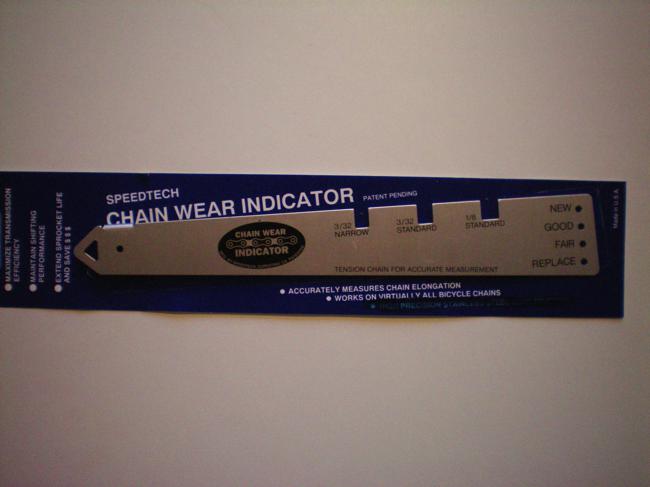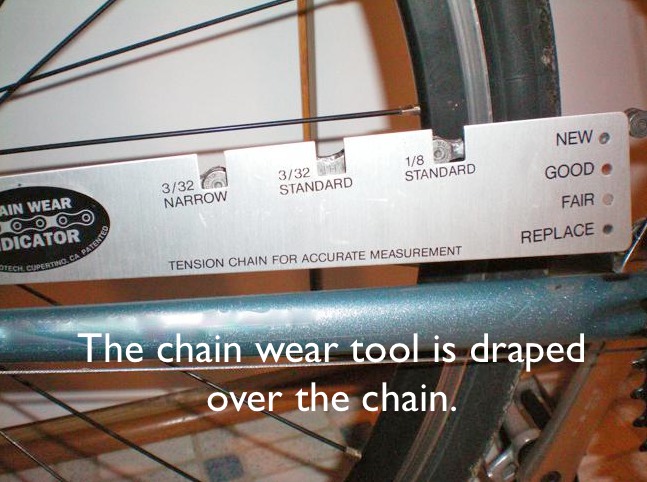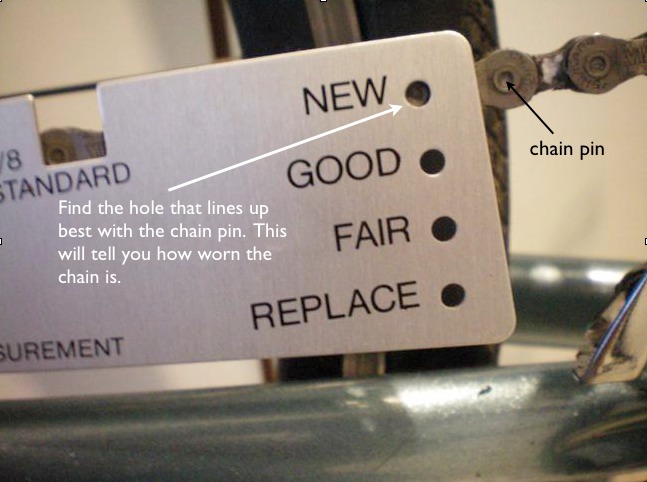
Worn Bicycle Chain and Cassette
Question of the week: “This past May I bought a hybrid bike. Now, at 2300 miles, I already need a new cassette. The bike shop said it’s all the miles I put in. How many miles can a cassette take?”
A cassette can take a lot of miles. But how many depends on how much care you give your chain. There’s this myth that when you replace your chain, you should also replace your cassette. That’s only true if you’ve really worn your chain out. The pins that connect the chain links wear over time, causing your chain to get longer. After a while, the shifting gets sloppy and inefficient and the chain starts to deform the cassette cogs and the chainrings.
The trick is to replace the chain before it gets too worn. You can purchase an inexpensive chain gauge which lets you check the wear of the chain. By replacing the chain before it reaches the “replace” point, you can continue to use the same cassette. Everything is expensive these days, but replacing just the chain is a lot less expensive than replacing the chain and the cassette.


So, the name of the game is to keep that chain going for as long as you can. That means cleaning it and lubricating it properly. The rider who sent in this question admitted to riding in the rain a lot and not paying much attention to her chain. Both the worn bicycle chain and the worn cassette died an early death. I’ve ridden the same cassette over 10,000 miles by caring for the chain and replacing it twice.
Note: The chain gauge shown here is no longer made. But check out Park Tool’s CC-3.2 Chain Wear Indicator. It’s inexpensive and works well.
